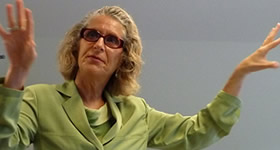Part 2: Last week was Part 1.
So my conclusion from last week’s Part 1… What more can I do? Well, I thought about that – and here are some topics I’m going to talk about.
1. Organizational culture: Business theory notes that “culture eats strategy for breakfast and lunch.” What and why. Importance. Developing, supporting, and measuring. Culture of philanthropy – special subset for nonprofit sector. I developed this curriculum for AFP ICON 2019, San Antonio. How about this topic for your professional association, your organization, a product for your community foundation…whatever…
Make sure you read the big read thing below! Skip the first 6 if you wish!! The big red one is really BIG!!
2. Leadership: In-depth probing. Theory and practice. How to develop yourself and others. Creating a leadership development program for your organization and its staff. Maybe a series for your organization or your association or your community…Or just a 1/2 mini session or who knows…
3. Trends and emerging issues: So much is happening…happened…will happen. And you and I have to cope with it. This is sooooo far beyond an organization’s mission or a particular sector. How do we build staff and organizations and processes to watch, monitor, anticipate, recognize, prepare…How do we build foresight? Yes, this is a strategic planning fundamental. But I’m also interested in operationalizing this into day-to-day operations.
Maybe read the big red item below first!!! The first 6 are definitely cool. But wow…the red one after #6.
4. Fundraisers as organizational development specialists: I wrote and talked about this beginning in the late 90s. I think it’s still a major weakness of fundraisers. The best fundraisers are not just great technicians. Writing the best direct mail…hosting the best events…securing tons of grants…All important stuff. But without understanding how everything in an organization fits together…like #1,2,3,5,7…and so much more!…you’ll have a tough time with fundraising.
I’m doing the red item first. I’m thinking 2020…fall or spring. What do you think?
5. Enabling others to do: People can’t just read a book and then be able to do the thing. Leaders enable others to learn and understand, anticipate and preempt, get the stuff done well. The CEO has to be the best enabler. The CDO better be darn good at enabling. And you can learn more about enabling in the handout in my Free Download Library on this website. You really have to learn this. Sequential sessions? Simulation? Daylong. What do you think?
Here it comes!!! The BIG RED ONE!!!!!!!!!!!!!!!!
6. Measuring “strange things”: Enough with measuring only money! Let’s measure ROI in various areas. CRQs (effective use of cage-rattling questions). Donor-centric quotient (DCQ). Board member performance (and that’s not not not gift size and $ raised!) When you ask me to speak, think about this topic!
THING I WANT TO DO FIRST…THE WAY WE SHOULD APPROACH GOOD GOVERNANCE Maybe you think this is old news…But I’m telling you that doing good governance well is still a frigging mess. And I’ve been playing in this arena since 1975.
Most boards are mediocre at best. Some are simply dysfunctional. And too damn few are really good. And this holds true no matter the “sophistication” of board members, the organization’s budget size, or the supposed experience level of board members.
PLEASE PLEASE LET’S FIX THIS! And not with “governance training for the board.” This is not the answer.
Who should be the governance expert in any and all boards (and I’m focusing on the nonprofit sector at this moment)? The ED/CEO. Because that’s an official (mostly) paid position. And as a professional, that individual in that position is expected to be well-trained and well-educated in the business, a lifelong learner, and an expert in management…and hence an expert in governance, too!
Who else should be an expert in governance in your organization? Anyone who works closely with board members or board committees…for example, the chief development officer!!
I teach a 30-hour course in governance in a Masters Program at Saint Mary’s University of Minnesota. I see the change in people’s understanding.
Topics would include: Organizational culture and development. Enabling. Conversation as a core business practice – which is different than discussion. Distinction between the board (collective) and board members. (Damn it! The terms are not not not not interchangeable!!!!!!!!) Relationship of board committees to the board itself – and to staff. Distinction between governance and management. Your board is not a fundraising team! Role of the board chair – one of the biggest messes in the field. Performance expectations of all board members. Power dynamics – like wealth, gender, race/ethnicity, etc. Identifying and recruiting candidates. Enabling the board, its committees, and the individual board members. And, when absolutely necessary, firing lousy board members.
This is a session for staff. This would require 2 days – like we’d all meet live in one place. Lots of great materials. Interactive lecture. Small group work / assignments. Simulation. Articles. My book Firing Lousy Board Members – And Helping the Others Succeed. Follow-up coaching. Undoubtedly points for CFRE.
Let me know what you think. Add a comment to this blog. Send me a personal email to spjoyaux@aol.com. You could even call me if you wished. 401.397.2534.

